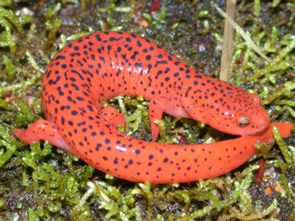
Pseudotriton ruber
Photo by JD Willson
Description: This large, stout salamander may reach lengths of 6-7 inches. They are bright red in color and have extensive black spotting on the back and sides. Individuals become darker with age and spots may fuse together to make the salamander appear purplish. Red salamanders are often difficult to distinguish from mud salamanders, Pseudotriton montanus. Red salamanders have gold or yellowish eyes and slightly longer snouts, while mud salamanders have brown eyes and blunter, shorter snouts. Larvae can get very large and typically have a grey or light brown base color. As they get older, larvae begin to develop the red pigmentation and distinctive spotting of adults. Small red salamander larvae are often extremely difficult to distinguish from small larval mud salamanders and spring salamanders, Gyrinophilus porphyriticus.
Habitat/Range: Red salamanders are found throughout wooded areas of the Piedmont and Blue Ridge Mountains of North Carolina. Although red salamanders may stray far from water, they are most commonly found in and around aquatic habitats such as headwater streams, seepages, and some wetland areas. Adults will often live in burrows adjacent to water. They may also be found under rocks, logs, or other cover objects on the forest floor.
Diet: Red salamanders emerge from hiding at night in order to forage on a wide variety of aquatic and terrestrial invertebrates. When presented with the opportunity, red salamanders will also consume smaller salamanders.
Reproduction: Red salamanders lay their eggs under in water during late Fall or early Winter. The female probably remains with the eggs until they hatch several months later. Hatchling salamanders emerge from their eggs with external gills and spend about 2-3 years as fully-aquatic larvae before transforming into adults. Some females may not be sexually mature until they are at least 5 years old.
Miscellaneous: By evolving bright red coloration similar to that of the extremely toxic red eft (Notophthalmus viridescens), the red salamander benefits from the fact that many predators have learned to avoid bright red salamanders. The red salamanders is also somewhat toxic itself, which helps to reinforce this avoidance behavior in predators.

The shaded region represents the range of the red salamander in North Carolina.
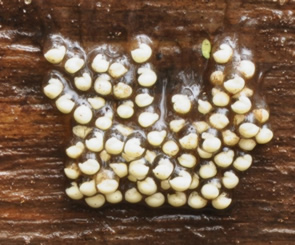
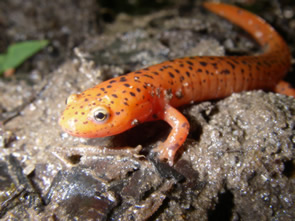
Photo by Steve Bennett
A red salamander metamorph.
Photo
by Kristen Cecala
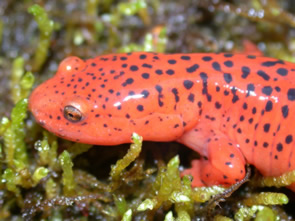
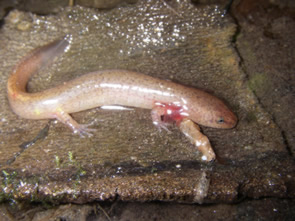
Photo by JD Willson
A larval red salamander.
Photo by Kristen Cecala
